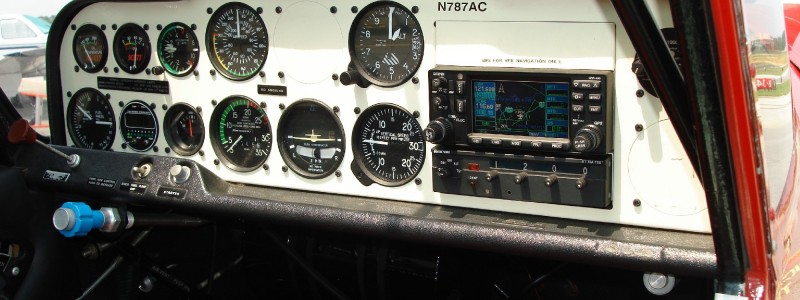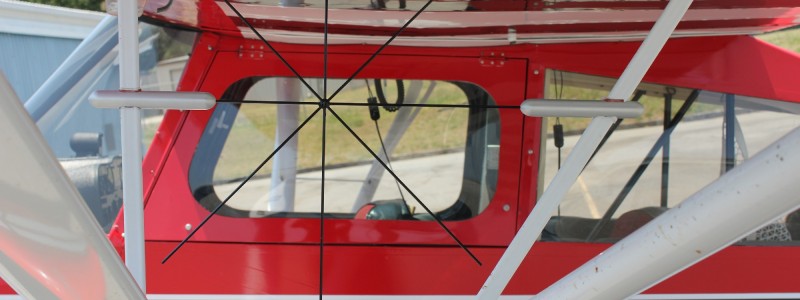Experience the total freedom and excitement of aerobatic flight as you improve your pilot skills in precision and coordination. Aerobatic training will make you a safer pilot and it will strengthen your self confidence. This course is taught by Steve Shaner – a flight instructor and former FAA Pilot Examiner with over 43 years of aerobatic instructing experience. Currently our aerobatic and tailwheel training is only available in customer-supplied aerobatic airplanes.
You may take as few or as many lessons as you wish, depending on how far you want to advance your flying skills. Night aerobatic training is also offered which raises the fun factor even higher! We also provide emergency upset recovery and evasive maneuvers courses.
You will also learn some skills in handling a tail wheel airplane and we offer a separate tail wheel pilot course in the Super Decathlon for tail wheel pilot signoffs.
The lessons are scheduled in 3.5-4.0 hour time blocks. You will typically fly anywhere from 1.5 to 2 hours, depending on your stamina and what is being covered. The remainder of the time includes a thorough question and answer period, preflight briefing, weather/notam check, preflight inspection of the aircraft, securing the aircraft and a post flight briefing on how well you did, answering questions and covering what to expect on the next lesson. We have found that this amount of time dedicated to training in this way is most productive and gives you the best value. The actual lesson time including ground time varies from 3.5 to 4 hours. You are only charged for the actual time from when you begin the lesson.
The complete course syllabus usually involves approximately 15 lessons. You can take as many or as few lessons as you desire. Additional training is available for night aerobatics and specialized routines. To learn the basics of 3 maneuvers, such as aileron rolls, spins and loops, 3 – 4 flight lessons would usually be needed. Custom courses for spins and emergency upset recovery are also available. All Super Decathlons, like most aerobatic airplanes are very weight – restricted. The maximum weight for a student with the FAA-mandated parachutes and safe fuel quantity for a lesson in most aerobatic airplanes is around 220 lbs. Students must be in good physical health. To make meaningful progress, at least 2 lessons per week should be scheduled.

Basic Aerobatics Syllabus
(Emergency upset avoidance and recovery and evasive maneuvers course will include all of ground unit 1, all of ground unit 2 except Aresti symbols and aerobatic sequence charts. It will also include all of flight units 1 and 2, 90 degree pitch and bank with low wing loading, split S and inverted recoveries)
Ground Unit 1 (approx. 3 – 5 hours)
- Examination of student certificates and log – establish experience level, medical fitness and
weight. - Course overview.
- Super Decathlon design, systems, numbers and checklist procedures.
- Tail wheel ground dynamics and procedures.
- Aerodynamics and demonstration/recovery procedures for stalls and spins (10 turn), Dutch
roll exercise and aileron roll, common errors. - DeKalb – Peachtree airport and practice area orientation and procedures.
- Pilot physiology during aerobatic flight – Grayout, Redout, GLoc, Hypemic Hypoxia, Anti-G straining
- Regulations (FARs) with regard to aerobatic flight and parachutes
- Traffic surveillance for aerobatics
- Preflight inspection – pilot (AIMSAFFER checklist), aircraft and parachutes
Ground Unit 2 (approximately 1 hour)
- Review ground unit 1.
- Questions and answers.
- Emergency egress procedures.
- Emergency parachute operation procedures
- Decathlon systems emergency procedures.
- Aircraft structural limitations
- Aviation weather briefing for aerobatic work.
- Wind compensation during aerobatics – geographic orientation
- Aresti symbols and aerobatic sequence charts
Flight Unit 1 (approx. 1.5 – 2 hours flight – may be shortened based on physiological needs)
- Review aviation weather briefing.
- Preflight briefing, questions and answers, procedures, common errors and recoveries.
- Preflight parachutes.
- Preflight aircraft.
- Start, taxi, run up, take off, climb, cruise and descent checklist procedures.
- Dutch roll rudder coordination exercise.
- Slow flight at MCA.
- Power off stall.
- Power on stall
- Steep turn.
- Introduction to the aileron roll and 10 turn spin.
- Arrival and landing
- Shut down and securing
Flight Unit 2 (approximately 1.5 – 2.0 hours flight)
- Aviation weather briefing.
- Preflight briefing, questions and answers, procedures, common errors and recoveries.
- Preflight inspection of parachutes and aircraft.
- Review and practice Dutch rolls and aileron rolls.
- Introduce roll reversal and 2point roll
- Introduce inside loop.
- Combine inside loop with aileron roll – loop to roll.
- Practice 10 – turn spin.
Flight Unit 3 (approximately 1.5 – 2.0 hours flight)
- Aviation weather briefing.
- Preflight briefing, questions and answers, procedures, common errors and recoveries.
- Preflight inspection of parachutes and aircraft.
- Review and practice Dutch rolls, aileron rolls, inside loops, roll reversal 2 point roll and loop
to roll. - Introduce AAFT geometric cross – control / coordination exercise.
- Introduce Immelman.
- Practice 10 – turn spin.
Flight Unit 4 (approx. 1.5 – 2.0 hours flight)
- Aviation weather briefing.
- Preflight briefing, questions and answers, procedures, common errors and recoveries.
- Preflight inspection of parachutes and aircraft.
- Review and practice aileron rolls, inside loops, loop to roll and Immelmans.
- Introduce Cuban 8.
- Practice 10 – turn spin.
Flight Unit 5 (approx. 1.5 – 2.0 hours flight)
- Aviation weather briefing.
- Preflight briefing, questions and answers, procedures, common errors and recoveries.
- Preflight inspection of parachutes and aircraft.
- Review and practice aileron rolls, inside loops, Immelmans and Cuban 8s.
- Introduce Hammerhead stall.
- Practice 10 – turn spin.
Flight Unit 6 (approx. 1.5 – 2.0 hours flight)
- Aviation weather briefing.
- Preflight briefing, questions and answers, procedures, common errors and recoveries.
- Preflight Inspection of parachutes and aircraft
- Review and practice aileron rolls, inside loops, Immelmans, Cuban 8s and hammerhead
stalls.
Introduce sustained inverted straight and level flight.
Flight Unit 7 (approximately 1.5 – 2.0 hours flight)
- Aviation weather briefing.
- Preflight briefing, questions and answers, procedures, common errors and recoveries.
- Preflight inspection of parachutes and aircraft.
- Review and practice aileron rolls, inside loops, Immelmans, Cuban 8s, Hammerhead stalls
and sustained inverted flight. - Introduce barrel roll
- Introduce emergency upset recoveries.
- Introduce split – s
Flight Unit 8 (approx. 1.5 – 2.0 hours flight)
- Aviation weather briefing.
- Preflight Briefing, questions and answers, procedures, common errors and recoveries.
- Preflight inspection of parachutes and aircraft.
- Introduce inverted turns
- Review and practice select maneuvers from flight units 1 – 7 to further sharpen skill level at
the discretion of the student (play time). - Course graduation
More than one flight lesson period may be require to accomplish any given flight unit as needed.
Additional optional training may be provided for maneuver combinations, slow rolls, hesitation rolls,
vertical rolls, reverse Cuban 8s, current Primary or Sportsman sequences and night aerobatics.


